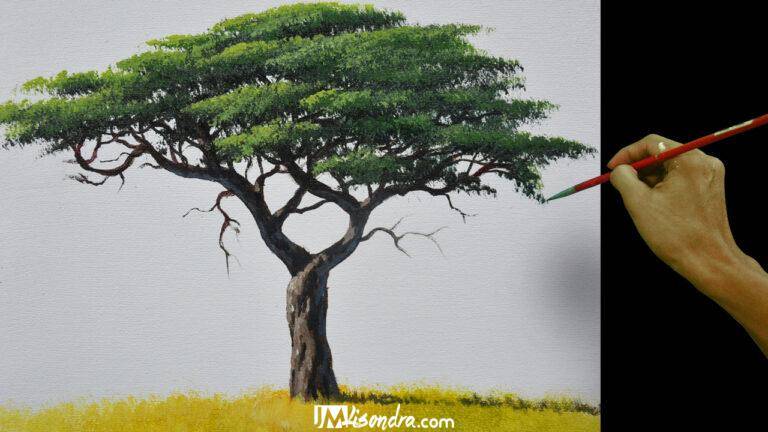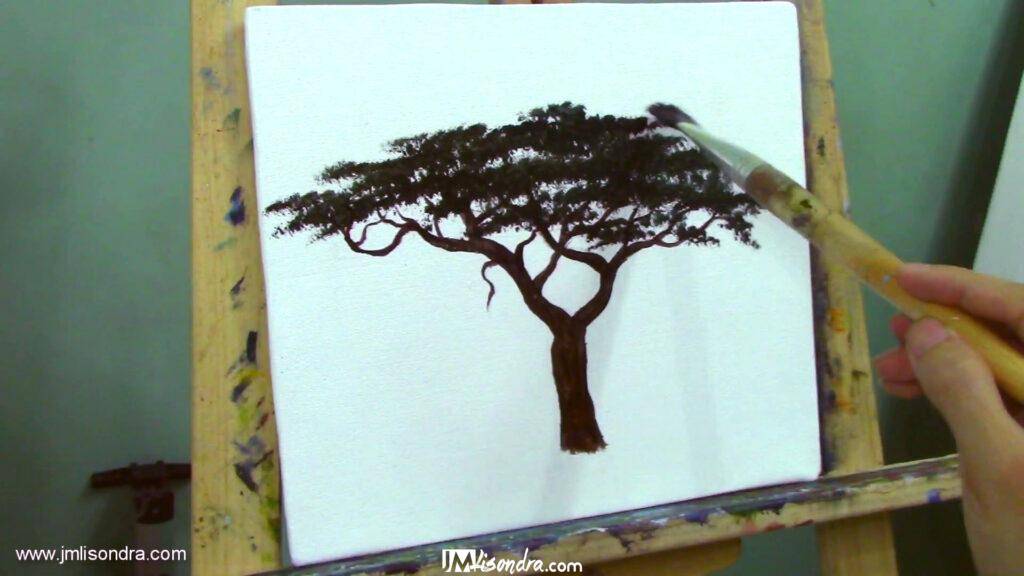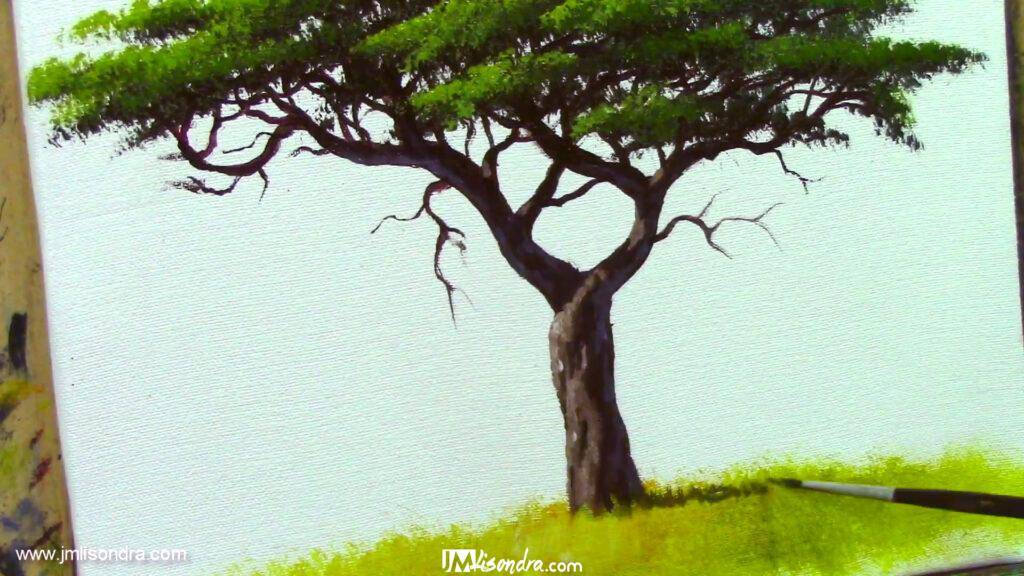How To Paint A Tree In Acrylics: A Step-by-Step Process

Acrylics are a fast-drying, water-resistant medium that’s great for creating works of art that you can display almost anywhere. If you’re interested in painting with acrylics but don’t know where to start, try exploring the world of trees. Trees are one of the most popular subjects among acrylic artists and for good reason: There is something soothing about their simple symmetry and endless variations.
Ideally, every artist has their own personal set of tree-inspired artwork hanging somewhere on their wall at home. But if that isn’t currently the case, it doesn’t mean you have to wait any longer to get started. In this blog post, we will show you how to paint a tree in acrylics using step-by-step instructions so you can get started right away.
Choose Your Color Scheme

When it comes to a painting of a tree, it’s important to first decide on a color scheme. There are thousands of different color combinations you could use to paint your tree, but the best option is generally to choose two or three colors that compliment each other well. Having a theme in mind will help you create a consistent and cohesive painting. When you’re deciding on a color scheme, you should consider the season and the mood you want to convey.
For example, you can create a piece that embodies the autumn season by using rich oranges and reds, or paint a calming blue-green tree to represent the spring. You could also paint a vibrant, tropical tree in bold, tropical colors. No matter what you choose, keep in mind that the colors of your painting will affect the mood that is created by your artwork.
Sketch Out Your Painting (Can be optional)
Before you jump into painting, it’s important to first sketch out your tree painting. Although the final product can be more spontaneous, there is really no replacement for a good sketch. It will help you to plan out both the composition and the details of your painting, while also allowing you to play around with different ideas and paint samples before committing to a final piece. For your sketch, you’ll want to draw out the various elements of your tree.
For example, you can sketch out the roots, trunk, branches, and leaves. Alternatively, you can focus on just one specific area of the tree, such as a single branch. Once you are finished sketching out your tree, you can draw guidelines on a piece of paper to help you further plan out your composition.
Lay Down the Background (Can be optional)
Before you start painting the details of your tree, you’ll want to create a background for your painting. This will help to establish a sense of depth in your artwork, as well as give your tree a more realistic appearance. There are many different ways you can create a background for your painting, such as by adding a colour wash or brushstrokes or by applying a coloured gel.
If you decide to create a wash, you can mix up your colour of choice with some water to create a consistency that can be applied easily. If you want to create a wash that is brighter, you can also try adding a drop of white acrylic paint to your colour of choice. Once you have your wash applied to the painting, let it dry so the paint can fully absorb into the paper before going on to the next step.
Paint the Trunk and Branches

After you’ve applied your background, it’s time to start painting the trunk and branches of your tree. For the trunk, you’ll want to use a darker, richer colour than what you would use for the leaves, with a mix of blue and yellow being a popular choice. If you want to create a more realistic effect, try applying a thin layer of transparent paint over a thicker layer of the same colour. This will help to create a bark-like texture and add more realism to your tree.
For the branches, you can paint them in a variety of different colours and patterns, depending on what you’re aiming to create. Green and yellow are popular choices, but you can also try experimenting with colours like red, orange, and blue if you want to create a more tropical-looking tree.
Add the Leaves and Details



For the final steps of your painting, you’ll want to add the leaves and any other details your tree may have, such as flowers or fruit. For the leaves, you can mix up various colours of green to create a more autumnal look, or try using colours like yellow, blue, and red to create a more tropical tree. You can also try painting the leaves in multiple colours to create a more abstract appearance.
When it comes to adding any other details to your tree, keep in mind that less is more. If you want to add flowers to your tree, for example, try painting them somewhere on the trunk or near the base of the leaves. If you’re adding fruit, try painting it near the top of the tree where the leaves begin to grow.
Conclusion
Finally, after hours of painting and adding the final details, your tree painting is complete! Now that you’re finished, you can choose where to display your artwork. You could frame it and hang it in your house, give it as a gift to a loved one, or sell it if you’re interested in making a profit. No matter what you choose to do with your painting, remember to be proud of what you achieved and enjoy your new artwork!
You can also watch the process on how to paint tree leaves and bushes here.
Do you want to join and learn from my online course? You can check it now!





